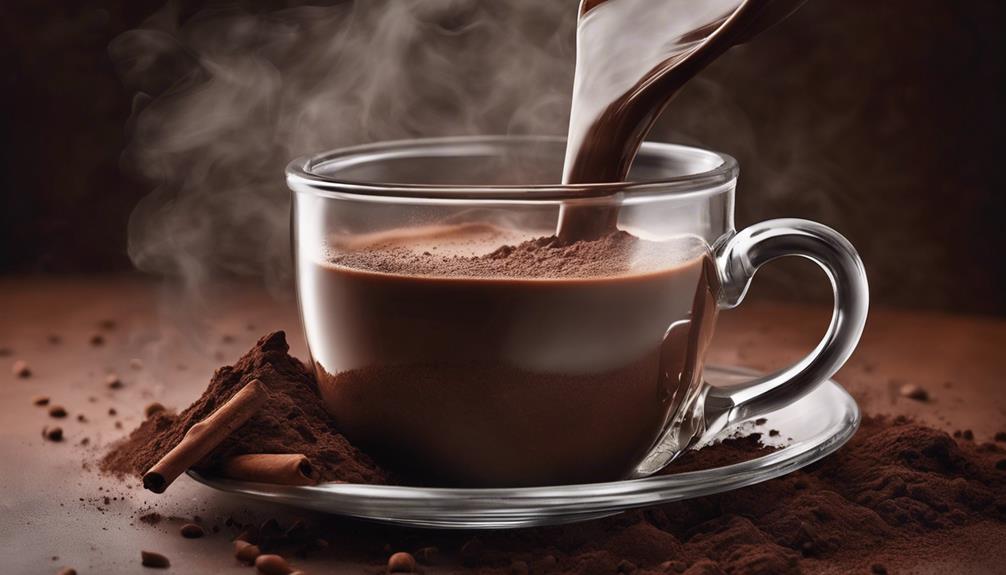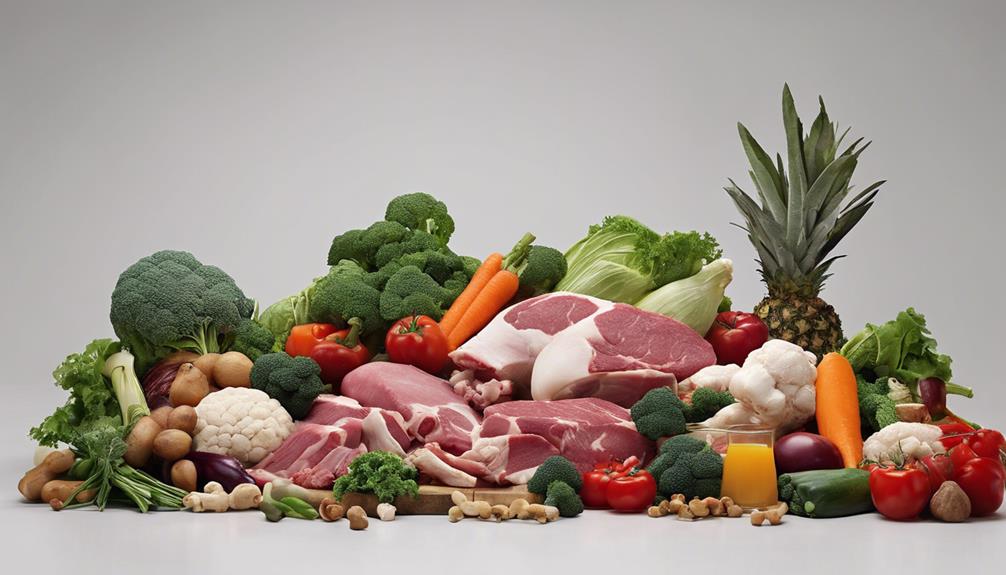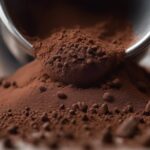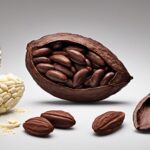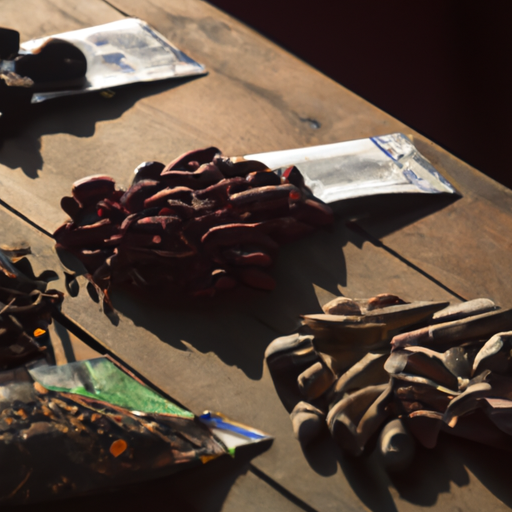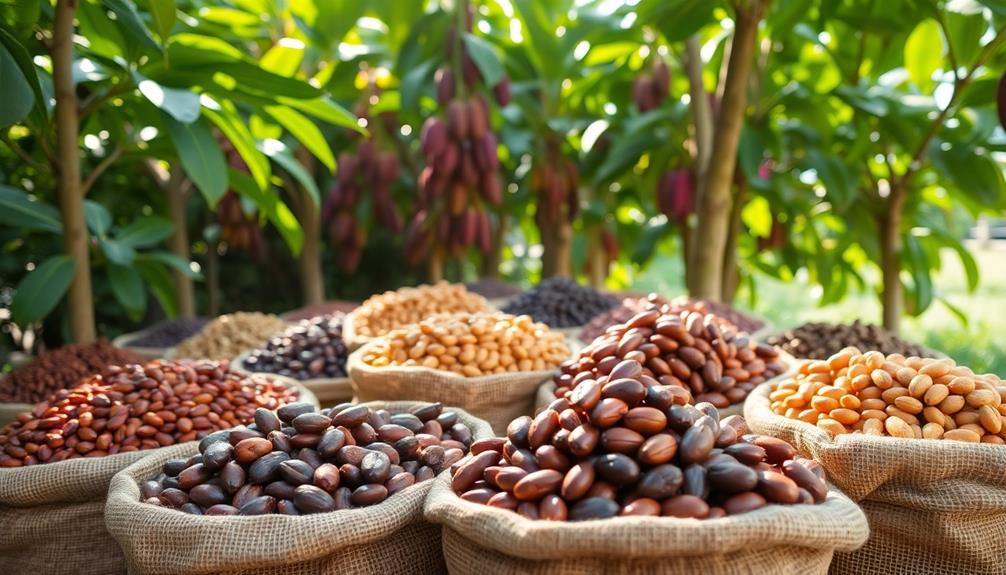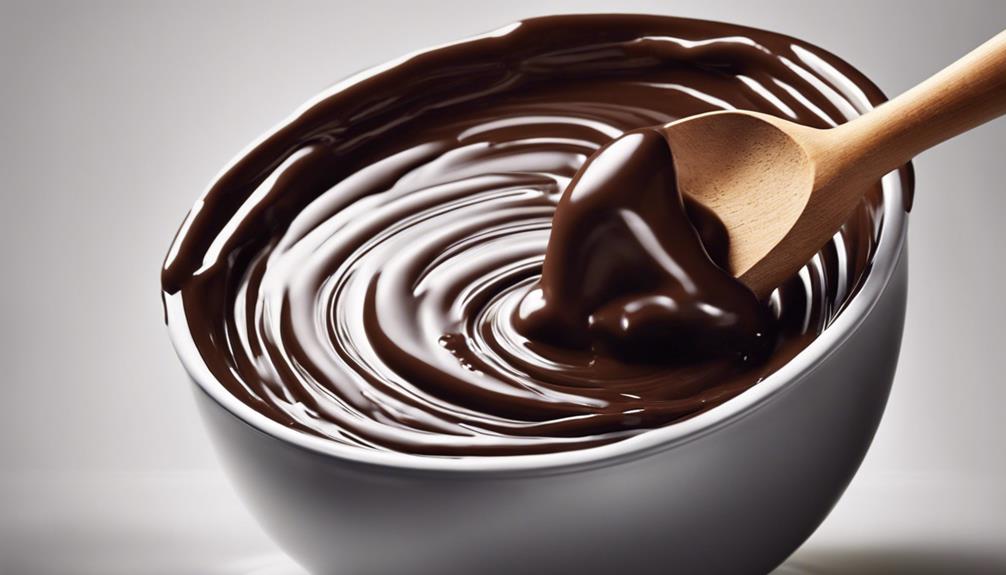I found out that the caffeine content in cocoa can vary depending on the product. Cocoa beans typically contain around 0.214% caffeine, while cocoa powders can range from 0.1% to 0.5%. Natural cocoa powders tend to have higher levels of caffeine compared to processed chocolates. Various processing methods, such as fermentation and roasting, can impact the caffeine levels. It’s interesting to see how caffeine interacts with cocoa compounds to produce a variety of flavors. If you’re interested in learning more about caffeine secrets in cocoa, you won’t be let down!
Key Takeaways
- Cocoa beans contain 0.1% to 0.5% caffeine.
- Processing methods impact caffeine levels in cocoa products.
- Fermentation, roasting, and grinding affect caffeine content.
- Cocoa powder has higher caffeine than processed chocolates.
- Understanding caffeine interactions in cocoa is essential.
Caffeine in Cocoa Beans
Cocoa beans contain caffeine in varying amounts, typically averaging 0.214%. This caffeine content can fluctuate based on the processing methods used and the quality of the beans. When cocoa beans are processed into cocoa powder, the caffeine content ranges from 0.1% to 0.5%.
The way the beans are fermented also plays a role in determining the final caffeine levels. Well-fermented African cocoa beans tend to have lower caffeine levels in the resulting cocoa powder. It's important to note that cocoa powder contains more caffeine compared to chocolate products made from cocoa.
Additionally, natural cocoa powders generally have higher caffeine levels than processed chocolates. Understanding the caffeine content in cocoa beans is vital for those who enjoy chocolate products or use cocoa powder in baking. By being aware of these variations, individuals can make informed choices when selecting cocoa-based products for consumption.
Impact of Fermentation on Caffeine
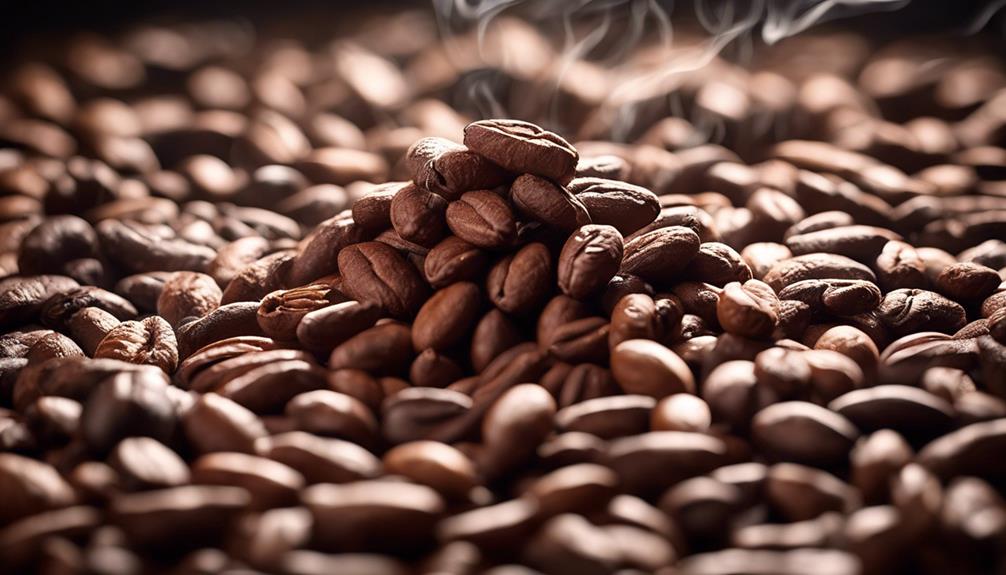
Exploring how fermentation impacts caffeine levels in cocoa beans reveals important insights into the final composition of cocoa products. During fermentation, the cocoa beans undergo a transformation process where compounds responsible for caffeine breakdown. This significant step can lead to lower caffeine content in the final cocoa product, influencing its flavor profiles. The duration and conditions of fermentation play a substantial role in how caffeine precursors are broken down in cocoa beans. By carefully controlling the fermentation process, chocolate producers can manage caffeine levels to achieve desired flavor profiles.
Proper fermentation is essential in chocolate production as it not only helps develop rich flavors but also affects the caffeine content in cocoa beans. Through meticulous attention to fermentation techniques, chocolate makers can control the caffeine levels, ensuring that the final product meets the desired taste characteristics. Understanding the impact of fermentation on caffeine content provides a foundation for creating high-quality cocoa products with distinct flavor profiles.
Role of Roasting in Caffeine Development
Roasting cocoa beans at high temperatures is an essential step in developing the flavor compounds and aroma of chocolate products. During roasting, the beans undergo chemical transformations that influence the final taste of chocolate. Surprisingly, the process of roasting also plays a role in determining the caffeine content in cocoa beans. As the beans are exposed to heat, certain compounds break down, which can impact the overall caffeine levels.
To give you a clearer picture, let's take a look at the table below that outlines the relationship between roasting, caffeine content, and flavor compounds in cocoa beans:
| Roasting | Caffeine Content | Flavor Compounds |
|---|---|---|
| High temperatures | Impact may vary | Enhanced development |
| Longer duration | Potential degradation | Richer aroma |
| Precise control | Maintaining levels | Balanced taste |
In essence, the roasting process not only enhances the flavor profile of chocolate but also influences the caffeine content in cocoa beans. Proper roasting techniques are vital to strike a balance between flavor development and caffeine preservation in the beans for the best chocolate production.
Grinding and Caffeine Extraction
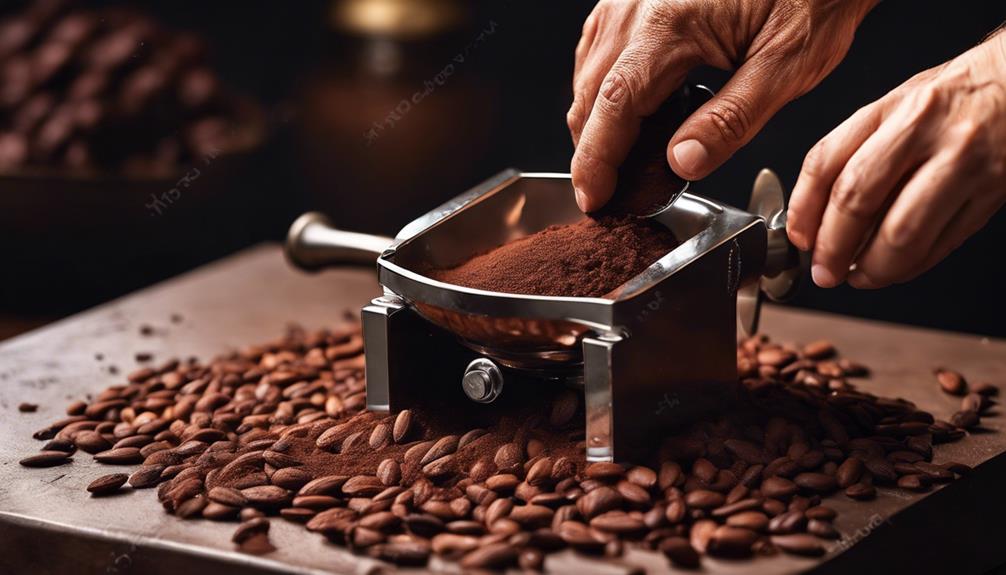
Delving into the grinding process of cocoa beans reveals the pivotal role it plays in extracting caffeine efficiently and enhancing the final flavor profile of cocoa products. When cocoa beans are ground, they release caffeine along with a myriad of other flavor compounds essential for that rich, chocolatey taste. The grinding process is vital as it breaks down the beans, allowing for a more efficient extraction of caffeine. This extraction process during grinding plays a key role in the overall flavor profile of cocoa products.
It's fascinating to note that grinding cocoa beans finely can actually enhance the levels of caffeine extracted. This means that the way in which the beans are ground directly impacts the caffeine content in your favorite cocoa treats. To guarantee you get the most out of your cocoa's caffeine content, mastering proper grinding techniques is key. By understanding the intricacies of grinding cocoa beans, you can maximize the caffeine extraction levels and fully enjoy the rich flavors cocoa has to offer.
Conching for Caffeine Enhancement
When it comes to enhancing caffeine in chocolate, conching is key.
This process not only helps evenly distribute the caffeine from cocoa beans but also impacts the flavor profile and overall smoothness of the chocolate.
Caffeine Infusion Techniques
To enhance the caffeine content in chocolate products, manufacturers utilize conching, a chocolate processing technique that mixes and aerates the chocolate to achieve a smooth texture and consistent distribution of caffeine. During conching, the chocolate undergoes continuous agitation at controlled temperatures to enhance smoothness and eliminate unwanted flavors.
Here are some key points about caffeine infusion through conching:
- Conching helps evenly distribute caffeine throughout the chocolate mass.
- The duration and intensity of conching impact the final caffeine content.
- Some manufacturers use conching to infuse caffeine for an added energy boost.
- Conching is vital for achieving consistent caffeine effects in chocolate products.
Flavor Impact of Conching
Exploring the flavor nuances influenced by conching techniques in chocolate production sheds light on how caffeine enhancement plays a role in the overall sensory experience of the final product. Conching, a process of mixing and aerating chocolate, not only enhances the taste and mouthfeel but also affects the distribution of caffeine within the chocolate.
Through conching, cocoa powder undergoes changes that impact the caffeine intake of the consumer. Longer conching times lead to reduced bitterness and a more mellow flavor profile in chocolate, providing a smoother overall experience. Understanding different conching processing methods is essential in producing high-quality chocolate with a balanced caffeine presence, ensuring that each bite offers a delightful and consistent experience.
Caffeine Content Control
In controlling caffeine content, conching serves as a pivotal chocolate refining process. Through conching, we can enhance or reduce caffeine levels in chocolate products to achieve specific outcomes.
This process involves continuous mixing and aerating of chocolate, which not only impacts the flavor and texture but also influences the caffeine content. The duration of conching plays a critical role in determining the final caffeine levels and overall quality of the chocolate.
To guarantee the desired caffeine levels in chocolate products, it's essential to master proper conching techniques. Remember, conching isn't just about refining chocolate; it's also about fine-tuning the caffeine content to create the perfect balance in your favorite treats.
Tempering and Caffeine Influence
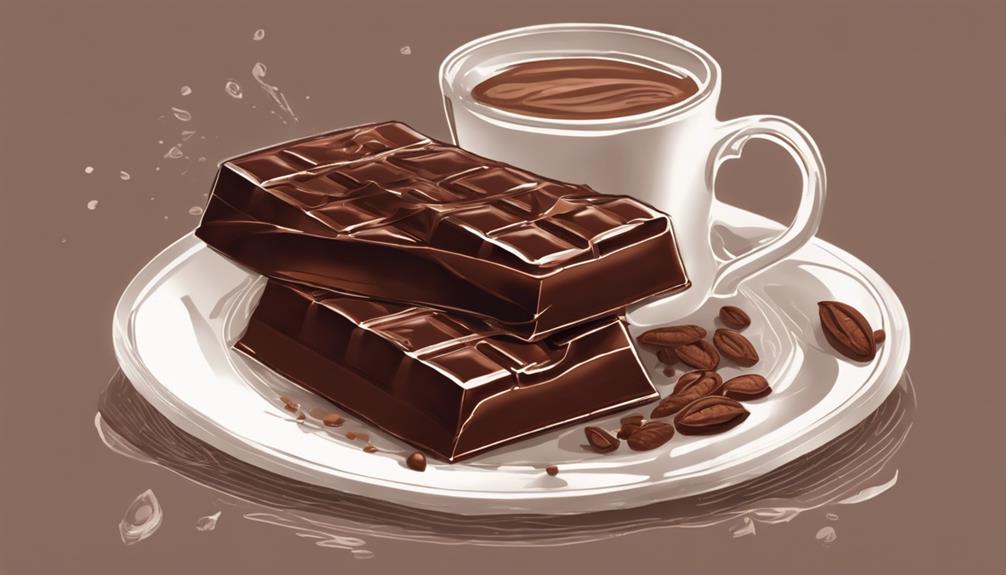
Careful control of temperature during the chocolate tempering process greatly impacts the distribution of caffeine in cocoa products.
When we temper chocolate, we aren't only aiming for the perfect texture and appearance but also influencing how caffeine is spread throughout the final product.
This means that the way we handle the tempering process can affect how caffeine is released and absorbed in our bodies when we enjoy that delicious chocolate treat.
Flavor Diversity Through Caffeine
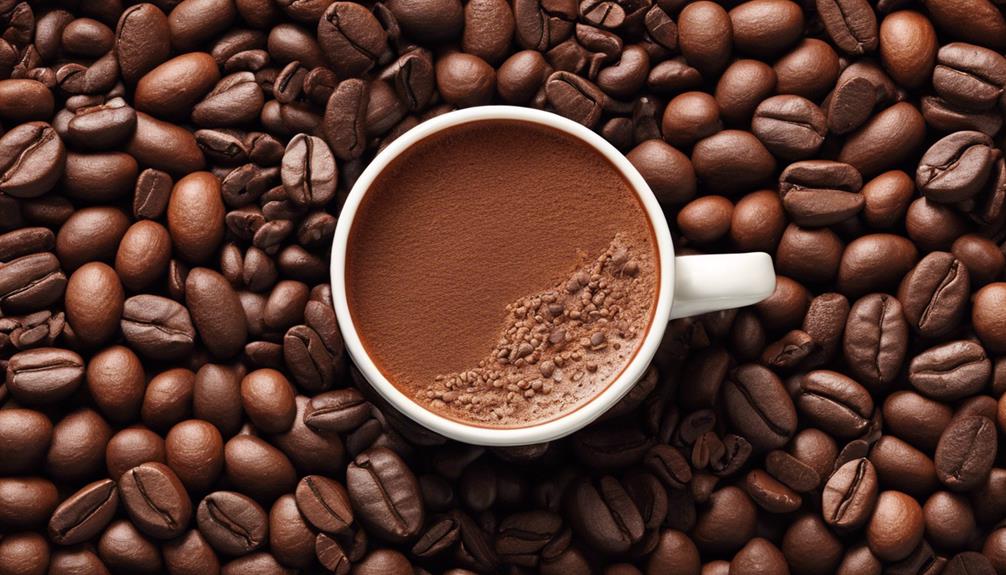
When considering the impact of caffeine on flavor diversity in chocolate, the varying levels found in cocoa beans play a significant role. The caffeine content in cocoa beans can range from 0.1% to 0.5%, affecting the taste profile of the final chocolate product.
Here are some key points to understand how caffeine influences flavor diversity:
- Cocoa Beans: The caffeine content in cocoa beans varies, influencing the intensity of the chocolate's flavor.
- Processing Techniques: Different processing methods can affect the caffeine levels in cocoa products, ultimately impacting the taste.
- Alkalized Cocoa Powders: These may have lower caffeine levels, resulting in a milder taste compared to natural cocoa powders.
- Natural Cocoa Powders: Generally contain higher caffeine levels, contributing to a bolder flavor in chocolates.
Chemistry of Caffeine in Cocoa
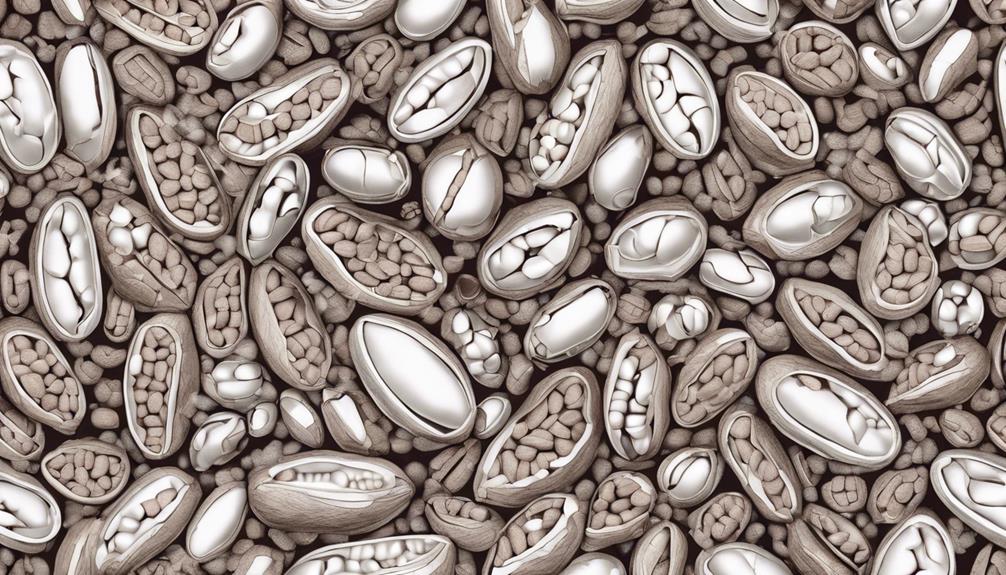
Caffeine, a natural stimulant found in cocoa beans, plays a pivotal role in the chemistry of cocoa. Understanding how caffeine interacts with other compounds in cocoa is important for appreciating its effects.
The amount of caffeine in cocoa can vary depending on factors like processing methods and bean origin.
Caffeines Effects in Cocoa
In delving into the chemistry of caffeine in cocoa, one discovers a significant stimulant content ranging from 0.1% to 0.5% in cocoa powder. Here are some key points to take into account:
- Cocoa powder contains caffeine in the range of 0.1-0.5%, making it a notable source of this stimulant.
- The processing techniques, such as fermentation and alkalization, can influence the caffeine levels in cocoa powder.
- Natural cocoa powders generally have higher caffeine content compared to processed chocolate products.
- Cocoa, with its higher caffeine content than chocolate, stands out as a significant source of this stimulant in various culinary applications.
Understanding these factors sheds light on the caffeine presence in cocoa and how different processing methods can affect its levels.
Caffeine Content Comparison
How does the caffeine content in cocoa compare to that in chocolate products? Cocoa generally contains more caffeine than chocolate products due to its concentrated form. Cocoa beans have an average caffeine content of 0.214%, while cocoa powder ranges from 0.1% to 0.5%. The caffeine levels in cocoa powder can vary based on the origin and processing methods used. For example, well-fermented African cocoa beans typically result in cocoa powder with lower caffeine levels. This difference in caffeine content is essential for individuals monitoring their caffeine intake. By understanding the caffeine levels in cocoa powder and its origin, consumers can make informed choices based on their preferences and dietary needs.
| Aspect | Caffeine Level |
|---|---|
| Cocoa Beans | 0.214% |
| Cocoa Powder | 0.1% – 0.5% |
| Origin | Varies |
Preserving Caffeine in Chocolate
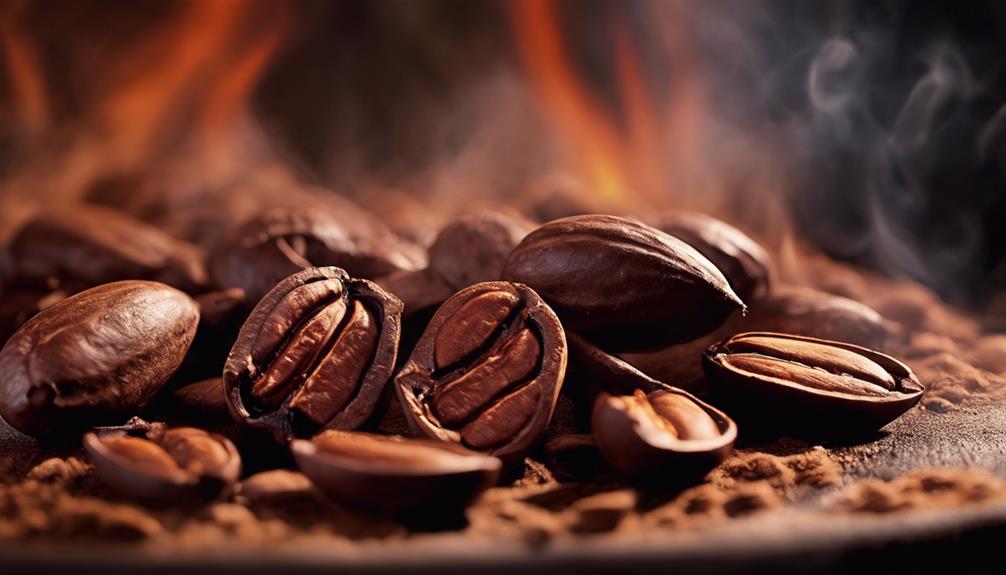
Roasting and grinding techniques during chocolate processing have a substantial impact on the preservation of caffeine content. The level of caffeine in chocolate is intricately tied to the cocoa bean fermentation process. Understanding how conching affects caffeine retention is essential in chocolate production. Additionally, tempering chocolate plays an important role in maintaining stable caffeine levels for consistent flavor profiles.
Preserving caffeine in chocolate involves a delicate balance of factors:
- Roasting and Grinding: These techniques greatly influence the final caffeine content.
- Cocoa Bean Fermentation: The process of fermentation directly affects the caffeine levels in chocolate.
- Conching Impact: Understanding how conching influences caffeine retention is crucial.
- Tempering Effects: Proper tempering guarantees the stability of caffeine levels for consistent flavor.
Frequently Asked Questions
Is There Any Caffeine in Cocoa?
Yes, there is caffeine in cocoa. The caffeine content can vary but typically falls between 0.1% to 0.5% in cocoa powder. This level is influenced by factors such as the origin of the cocoa beans and the processing methods used.
Is There Caffeine in Ceremonial Cacao?
Yes, ceremonial cacao can contain trace amounts of caffeine, but its focus is on theobromine. It's valued for mood enhancement and heart-opening properties, emphasizing spirituality over caffeine. Ceremonial cacao ceremonies prioritize mindfulness and connection.
Is There a Lot of Caffeine in Hot Cocoa?
There isn't a lot of caffeine in hot cocoa; an 8-ounce serving typically has 5-10 milligrams. The content varies depending on the cocoa powder used. It's a mild source of caffeine, offering a gentle energy lift.
How Do You Remove Caffeine From Cocoa?
When we remove caffeine from cocoa, we typically use processes like decaffeination with solvents such as ethyl acetate or carbon dioxide. These methods help reduce caffeine content to less than 0.1%, allowing us to enjoy flavorful cocoa with less stimulation.
Is Cacao Powder a Healthier Alternative to Caffeine in Cocoa?
Yes, cacao powder is a healthier alternative to caffeine in cocoa. The natural caffeine boost with cacao powder provides a sustained energy lift without the jitters or crash. It’s packed with antioxidants, minerals, and vitamins, making it a nutritious choice for those looking to cut back on traditional caffeine.
Conclusion
To sum up, the journey of caffeine in cocoa beans is a captivating process that involves various stages such as fermentation, roasting, grinding, conching, and tempering. Each step plays a vital role in developing the caffeine content and flavor profile of chocolate.
Understanding the chemistry behind caffeine in cocoa can help us appreciate the complexities of chocolate making and the importance of preserving caffeine for a diverse range of flavors.

